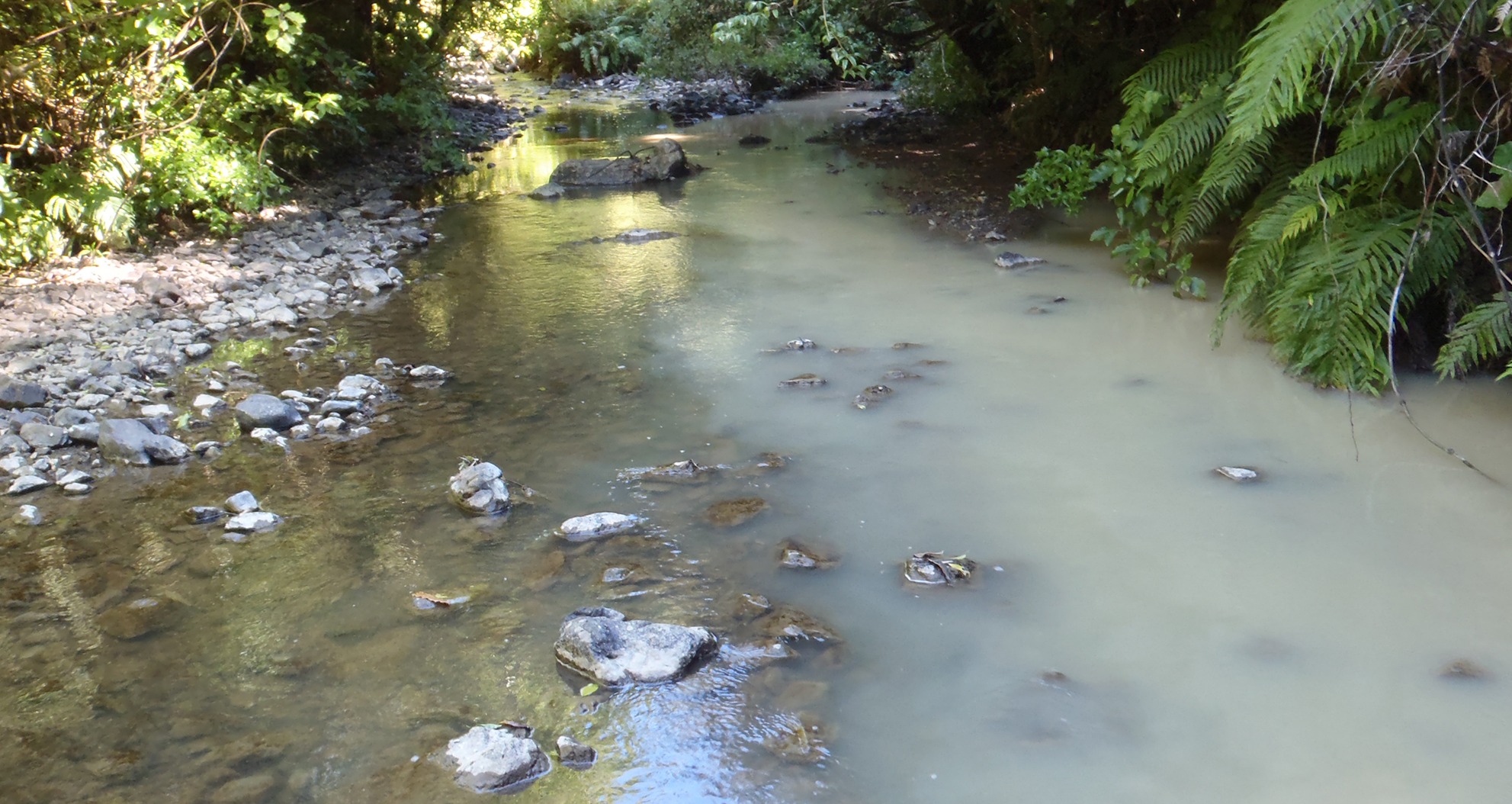Ever notice what your local river looks like after it has been raining? An increase in water levels and flow are often obvious, however, sometimes that is not the only change. After heavy rain, the water can turn from a transparent blue-green, to cloudy brown.

Rivers typically begin in the hills or mountains (such as the Tararua, Ruahine or Kaimanawa Ranges, or the Central Plateau around Mount Tongariro) where they flow through native vegetation in their natural state.
Sand, soil, clay, silt and other material (collectively known as sediment) is a natural feature of any waterway but it changes depending on the nature of the land surrounding the water (the geology of the rocks, or type of earth layers present). Sediment enters rivers and streams during heavy rainfall events and travels downstream when the flow is strong. Too much sediment in a river is a serious issue and can change the health of the river significantly.
 Sediment in the water at the Manganui o te Ao River and Makino Stream confluence, 24th March 2016
Sediment in the water at the Manganui o te Ao River and Makino Stream confluence, 24th March 2016
The Horizons Region has the highest proportion of erodible land in the country, generating landslips, slumps and streambank collapses. This results in fertile soil and sediment being washed into waterways. The amount of sediment depends on the volume of rain, the landscape (including the number of trees or plants), or how the land is being used.
In parts of the region, there is too much sediment in waterways already. Once it is in there, it takes a long time to travel through the entire river system to the sea. When the river flow decreases or in slower moving areas such as deep pools, lakes or estuaries, the sediment can settle out or sink through the water onto the bed.
Excess sediment has significant impacts on fish and insects. It covers the river bed like a blanket – but not one that comforts, one that smothers. The cloudiness of the water makes it difficult for aquatic life to see or feed, and it damages the unique habitats in the river for specific animals or plants to live in.
Sediment also effects our relationship with the water; in the summer particularly when we often enjoy cooling off by the river or collecting kai. However, when it rains, the sediment already in the river is stirred up and new sediment is washed into the water. Often the rain brings with it other things water lovers want to avoid – faecal matter (waste from animals or humans) and bacteria. For these reasons, you should always wait three days after heavy rain, or until the water is clean and clear before you swim. From November until April, you can check lawa.org.nz for our most recent water quality monitoring results.
Sediment can also reduce the stop bank capacity to contain large water flows within the river. If we get lots of rain - like in December 2021 – the extra water causes flooding and this can have an impact on our towns, cities and countryside. If we add in the effects of climate change – where rainfall is predicted to increase - flooding may become more common.
Horizons’ staff measure sediment in rivers and streams across the region and works in partnership with Manaaki Whenua – Landcare Research, to understand how to more effectively reduce sediment in waterways. Our land management programme for erodible land (SLUI or the Sustainable Land Use Initiative) has been growing since 2004, planting millions of trees. We also help to manage other activities (through consents) that may lead to sediment entering our waterways.
We can’t stop the rain from falling but we can check our own behaviour when it comes to sediment. This means using land sustainably, planting more trees and native plants on land likely to slip, and keeping the abundant soils where we need them to be. Within our towns and cities even simple things such a as washing your car on the lawn can also prevent issues in stream. We are all connected to the extensive network of waterways and they are a great feature of our region that we all want to protect and preserve.

